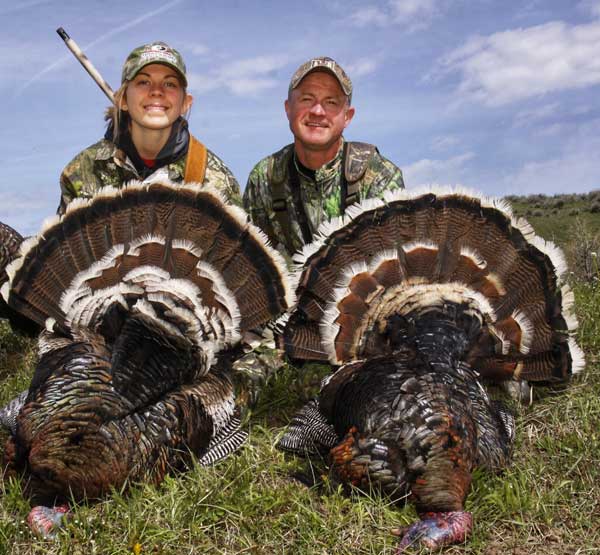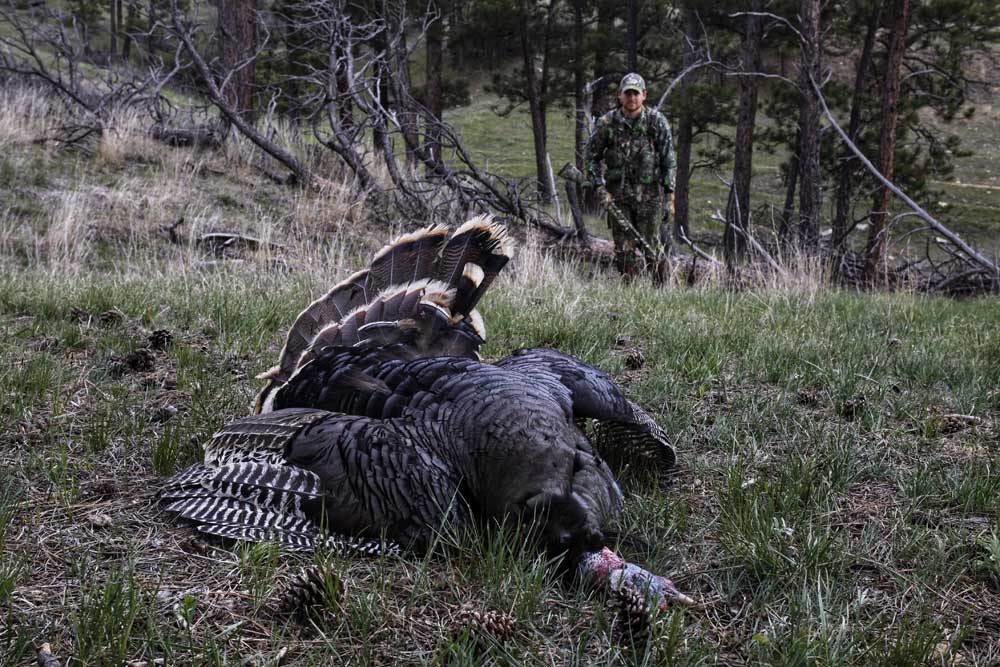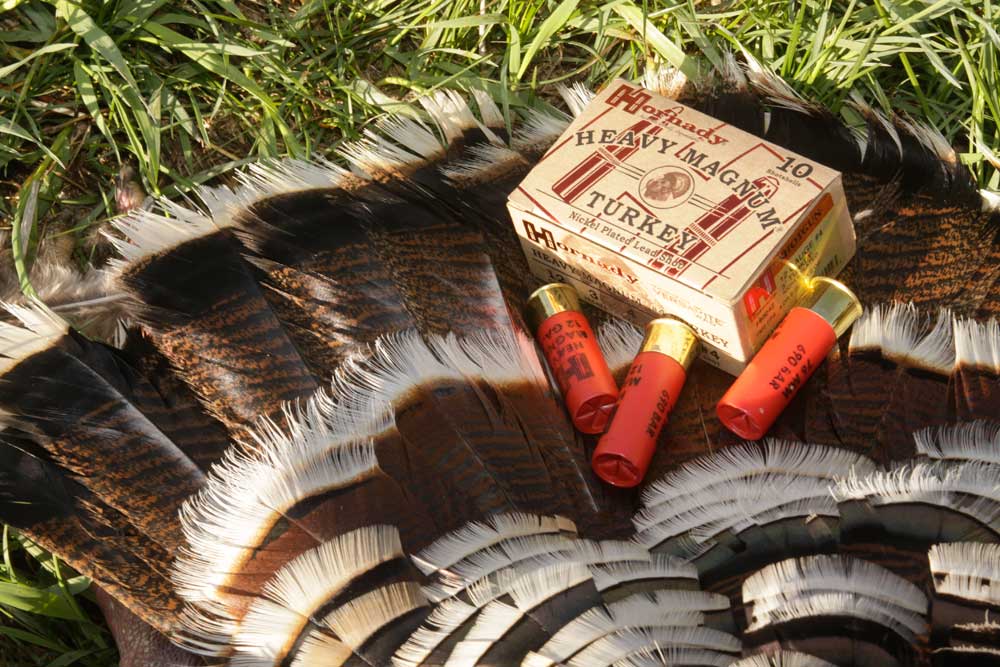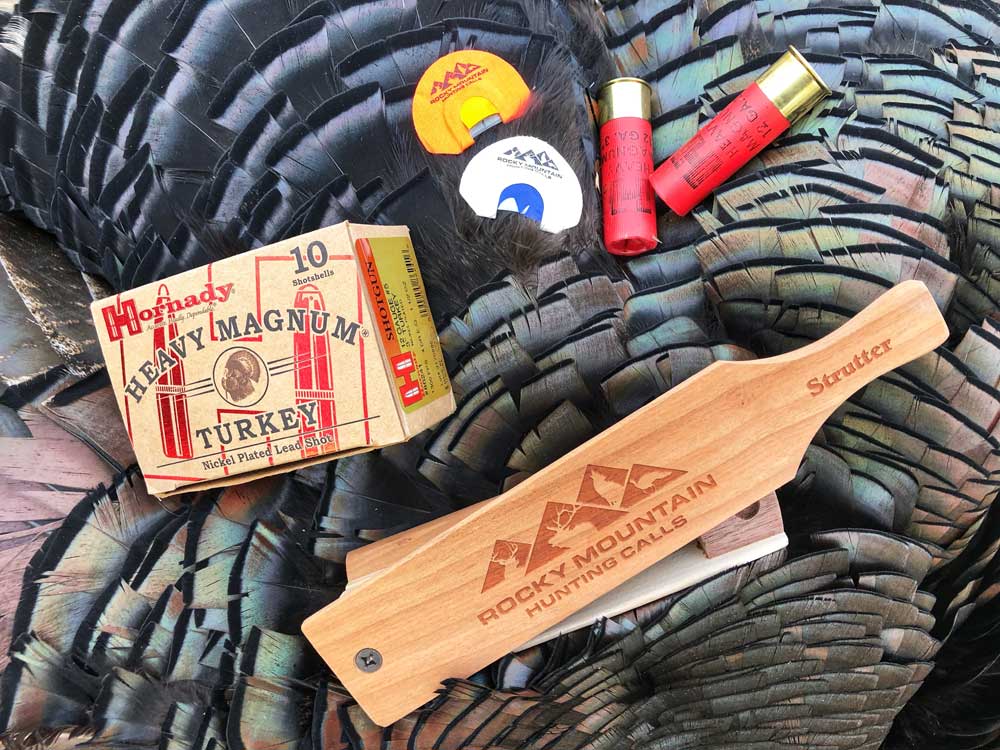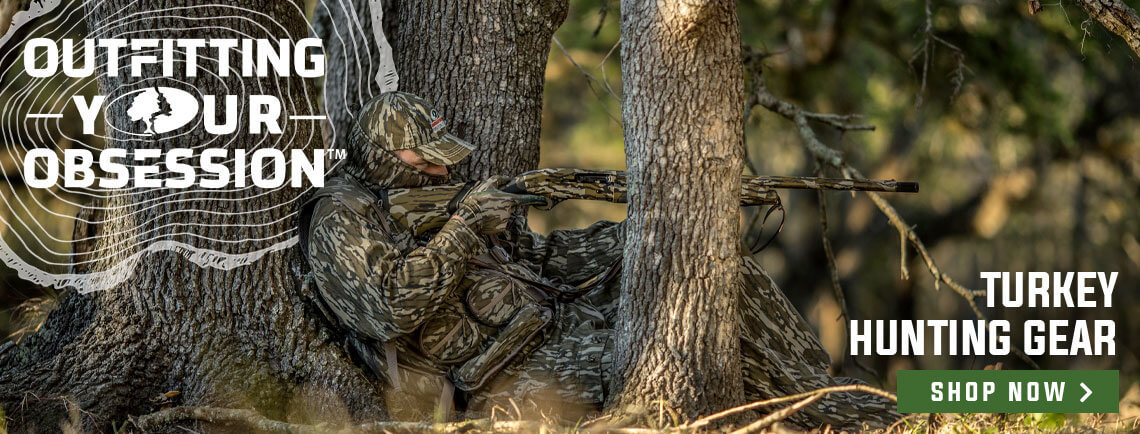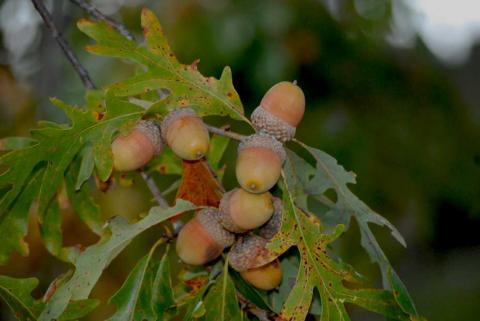Mark Kayser
Mossy Oak’s Bottomland camouflage pattern hit the turkey hunting scene in 1986. Introduced with a hint of favoritism to hunters in the South, it has proven itself across turkey hunting landscapes from coast to coast. If your Bottomland pattern has not taken a turkey hunting vacation, it may be time to stuff it in the duffel and visit Merriam’s country for a completely different turkey hunting experience with a view.
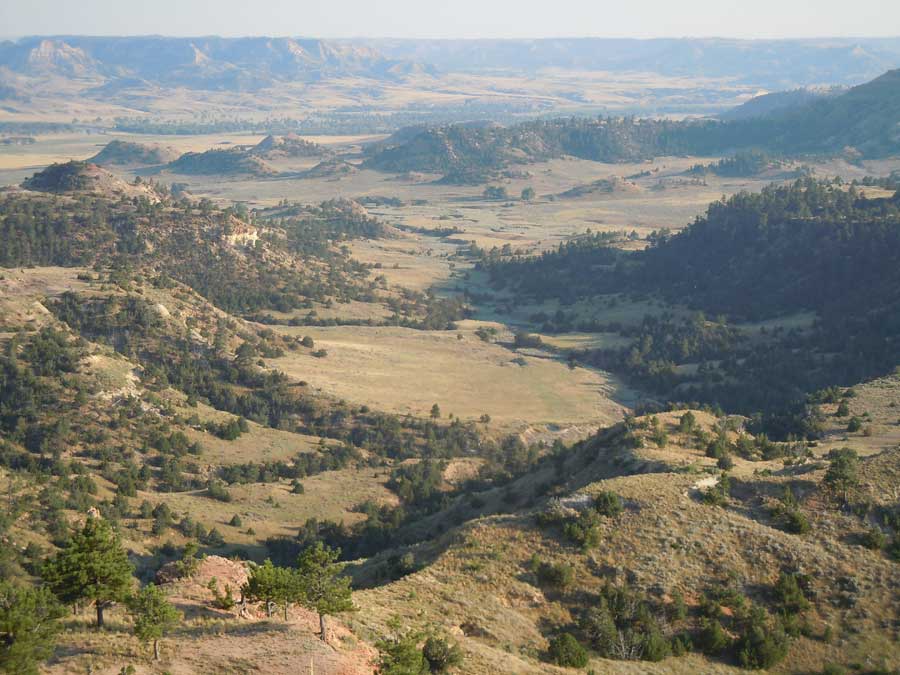
There are many reasons to tack a Merriam’s tail to your wall including the undertaking of a Grand Slam. This is the feat of taking one of the four subspecies found in America, Eastern, Osceola, Rio Grande and Merriam’s. Bragging rights to a Grand Slam aside, there are even more personal reasons to hunt Merriam’s, named after C. Hart Merriam, the first chief of the US Biological Survey way back in 1900.
The first reason to hunt Merriam’s turkeys is a change of scenery. What a change you will experience if you have never spent much time in the West. Merriam’s populations begin in the Great Plains. States like South Dakota and Nebraska, but the breathtaking views of all states west and southwest of there also hold Merriam’s populations. Popular destinations include the Wyoming Black Hills, eastern Montana, the mountains of Colorado and New Mexico, plus scattered densities throughout the West and pine islands of the desert Southwest. There is something special about the ring of a gobble in a Mississippi swamp, but hearing a Merriam’s crack a gobble with a snow-capped peak in the backdrop cleanses the soul.
Add to the majestic scenery the fact licenses are relatively easy to acquire. If you plan accordingly, you can take several turkeys in states like South Dakota and then travel to Nebraska, Wyoming and Montana for even more open-country gobbling action. Putting meat in the freezer is typically not a mission for most turkey hunters, but enjoying the excitement of a hunt does rank high. That is where Merriam’s can truly give more than other species.
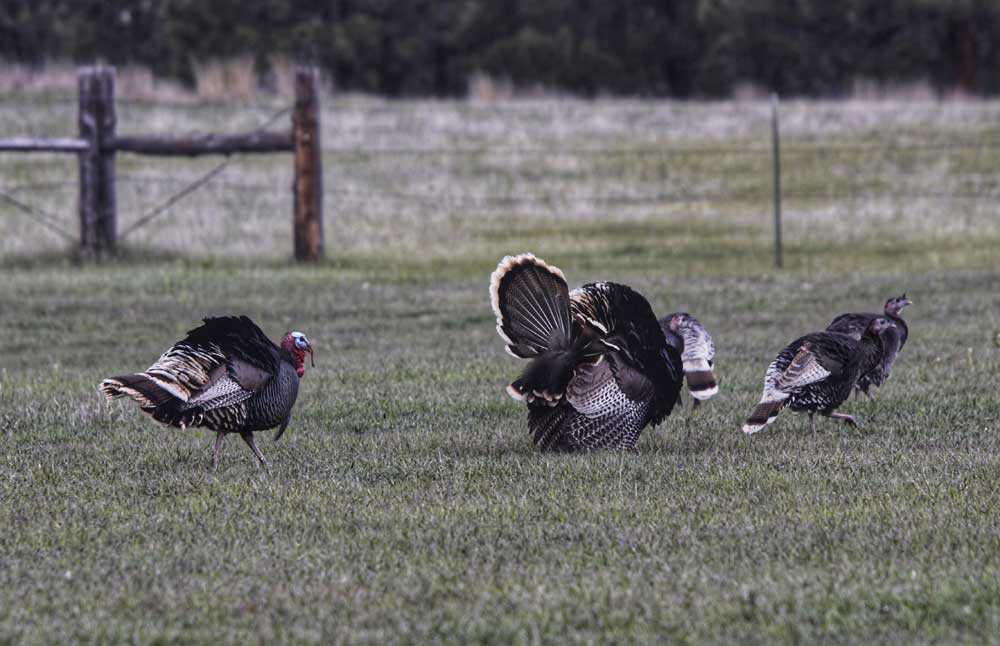
Merriam’s 101
Sure, Easterns and Rios are abundant, but Merriam’s have another great trait. They like to hear themselves gobble. And better yet, they do not have a shut off switch. You can hear them crank up at any time of the day to keep you on the track of a fanned, white-tipped trophy. Pressured birds can begin to act like any other species. Nevertheless, the large expanses of the West mean you have a chance to find pockets of birds that may have felt little or no hunting pressure. That means they could react promisingly to your calls and decoys. If there is one mistake I find among novice hunters calling Merriam’s is that they give up too easily. Try loud, try subtle or set the volume to medium, but one of those should trigger a showing.
Finding Merriam’s can be another story. I use my Sig Sauer 10-power binocular as much as my calls. In prairie environments you scout for timber. Stands of pines, cottonwood riparian zones and even stout cedars can provide roost habitat for turkeys. Since most Merriam’s country is dry, save for the Northwest, water is also a good indicator of where Merriam’s may live. Some of the areas I have hunted have an annual rainfall of less than 18 inches. In regions like this, scout for reservoirs, potholes, creeks and rivers that attract Merriam’s.
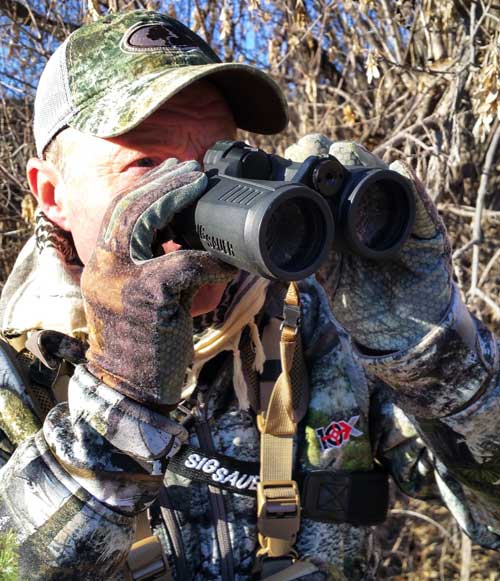
The high, snow-capped peaks may not be suitable for Merriam’s, but every other inch of forest can hold turkeys. I have run across gobbling turkeys above 8,000 feet moving across feet of snow and subsisting on pine seeds in addition to other nutrition they scratch up on sun-melted slopes. Speaking of nutrition, Merriam’s are an omnivore in the feathered world so pay attention to all food sources. They will eat almost anything. In the early spring, before the green-up, they target grain, pine mast, dried grass and anything they can root up. As insects thrive, they gobble up tiny life fast. When snow covers the landscape, they oftentimes depend on ranchers and farmers for handouts while these folks feed their livestock. From survivalists to beggars, Merriam’s cover the diet spectrum.
In short, do not overlook any location regardless of its turkey-looking qualities. Open your hunting app and explore the acres of public-land opportunity in the West. Hunting apps, like OnX Hunt, make finding public lands easy in the oftentimes checkerboard setting of property ownership. Except for the Great Plains states, most of the Western states are at nearly 50 percent public with some above 75 percent. You will have chance to roam.
Finally, if you are hunting with a partner, set up for a possible double-gobbler encounter. Merriam’s are notorious for coming to the calls in gobbler packs and I overlooked that aspect on a past spring hunt with my daughter. We spied a flock of turkeys working across a large, open hillside and using gullies, we slid into position where we felt they would be close enough to call.
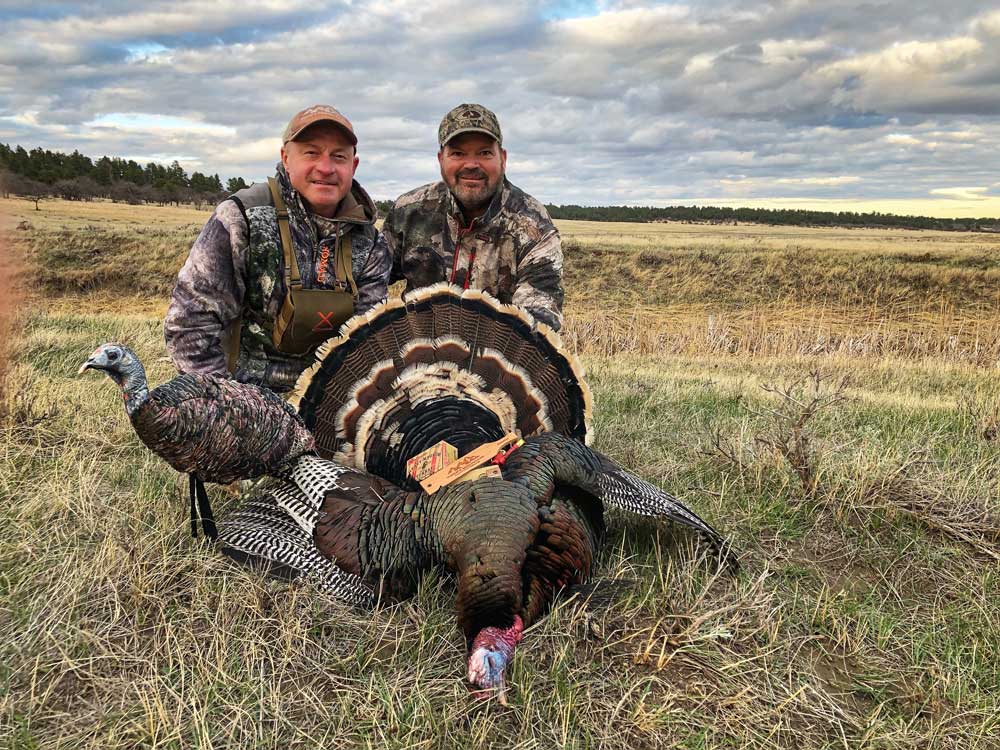
I staked a decoy and both of us lay prone in a depression. The sham worked slicker than Phil Swift’s Flex Seal products. A rambunctious gobbler raced to the yelps from my Rocky Mountain Hunting Calls diaphragm and Montana Decoy. When it was inside of 20 yards, I whispered to my daughter Katelyn to “take him.” The load of Hornady 5s knocked the bird over and it fluttered to its demise.
Shockingly, three more toms raced to pounce on the fallen patriarch. With a valid license in my pocket, I slowly slipped another shell in the single-shot CVA shotgun and lined up on another mature tom as the trio continued their beak-busting brawl. My shot was also true and in less than 10 minutes of action, Katelyn and I were packing out nearly 40 pounds of Wyoming prime turkey for future dining.
A vast adventure awaits you in the West and Merriam’s highlight a spring visit to this wonderland.
For more about Mark Kayser and ways to follow him on social media, visit www.markkayser.com.
